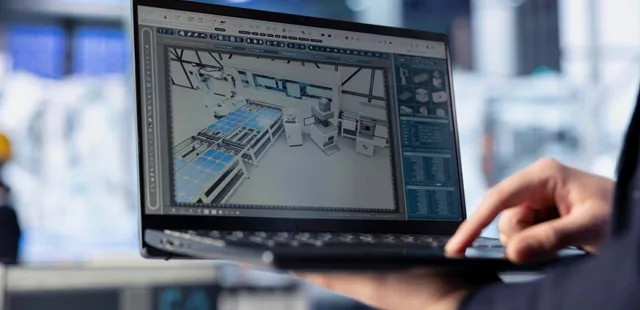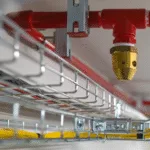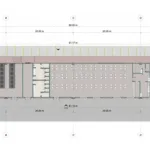septiembre 17, 2025
BIM Applied to Industrial Projects: Real Advantages
In Mexico’s construction industry, industrial projects require precision, strategic planning, and efficiency at every stage. One tool that has transformed the way we work is BIM (Building Information Modeling), a digital methodology that enables comprehensive planning, design, construction, and management of projects.
At TESSIN Constructora, we implement BIM in our industrial projects because we know this technology delivers tangible benefits for our clients: cost savings, reduced timelines, and higher execution quality.

What is BIM and How Does It Work?
Building Information Modeling is not just software but a collaborative system that centralizes all project data into an intelligent three-dimensional model. Every construction element (from foundations to electrical installations and finishes) is recorded in a digital environment accessible to the entire team.
This means architects, engineers, contractors, and clients work on the same database, ensuring transparency and providing a complete vision of the project from planning through operation.
Real Advantages of BIM in Industrial Projects
- Accurate Planning from the Start
With BIM, it is possible to anticipate scenarios and simulate the construction process before laying the first stone. This helps detect system clashes (e.g., ducts, structures, and wiring) during the design stage, preventing delays during construction. - Cost Optimization and Waste Reduction
Detailed planning allows precise calculation of materials and resources. This prevents over purchasing, rework, and waste representing savings of up to 20% of the total budget. - Real Time Collaboration
All project participants access the same digital model. This eliminates duplicated information and streamlines communication between disciplines, speeding up critical decision making. - Improved On Site Safety
Thanks to prior simulation, construction risks can be anticipated, and more effective safety protocols can be implemented. This reduces accidents and improves working conditions on site. - Sustainability and Energy Efficiency
BIM allows analysis of the industrial facility’s energy performance, identifying improvements in ventilation, lighting, and resource consumption. This not only lowers operating costs but also helps comply with environmental and sustainability standards. - Building Lifecycle Management
One of BIM’s greatest advantages is that it doesn’t end with project delivery. The digital model becomes a valuable tool for preventive and corrective maintenance, as it contains all building data essential for long term operation.
BIM in the Context of Industrial Construction in Mexico
Competitiveness in Mexico’s industrial sector demands faster, more efficient solutions with minimal margin for error. Companies that implement BIM, such as TESSIN Constructora, are better equipped to meet these demands delivering higher quality projects, on time completion, and resource optimization.
Moreover, more clients and investors are seeking partnerships with construction companies that apply this methodology, recognizing that it translates into more profitable and sustainable projects.
Conclusion
BIM applied to industrial projects is a real competitive advantage in Mexico. It’s not just about digitizing construction but about transforming how buildings are conceived, executed, and maintained.
At TESSIN Constructora, we believe technological innovation is the foundation for building with quality, efficiency, and a forward looking vision. With BIM, we guarantee our clients stronger, more profitable, and sustainable industrial projects.






